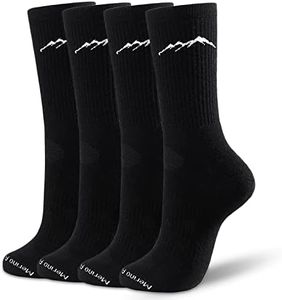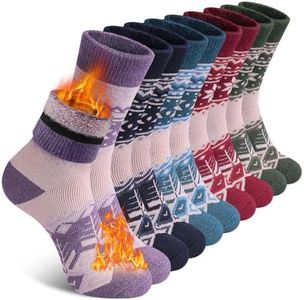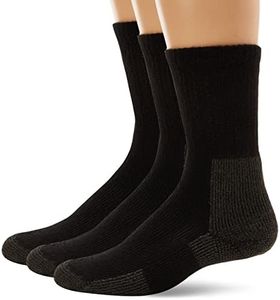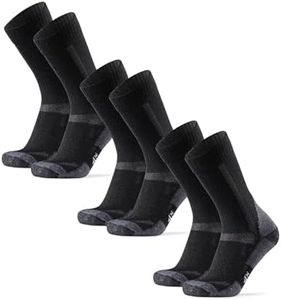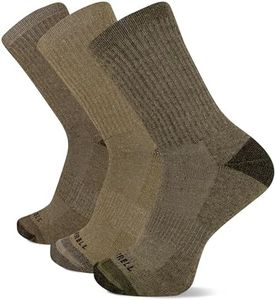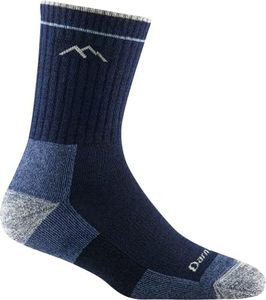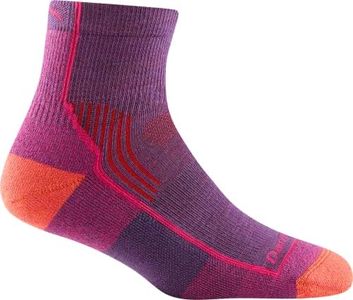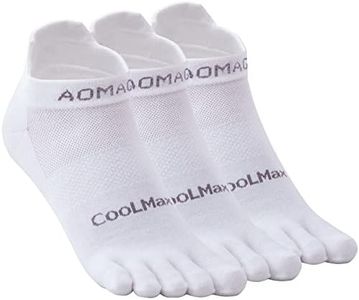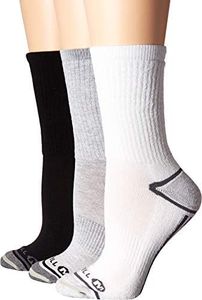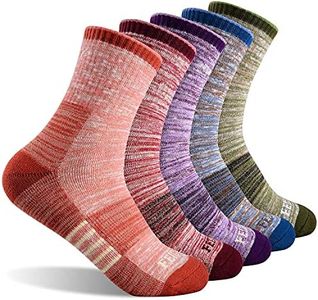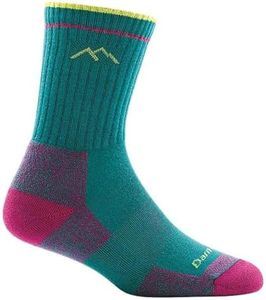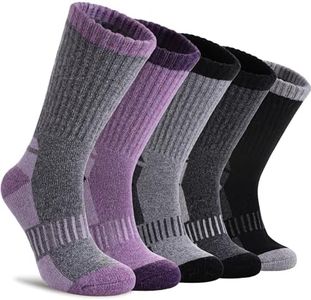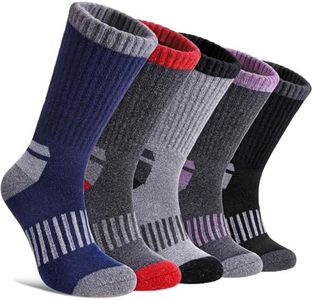We Use CookiesWe use cookies to enhance the security, performance,
functionality and for analytical and promotional activities. By continuing to browse this site you
are agreeing to our privacy policy
10 Best Womens Hiking Socks
From leading brands and best sellers available on the web.Buying Guide for the Best Womens Hiking Socks
Choosing the right women's hiking socks is essential for a comfortable and enjoyable hiking experience. Good hiking socks help prevent blisters, manage moisture, and provide cushioning on tough trails. It's not just about picking the prettiest pair—it's about understanding what your feet will need on your chosen hikes. Let's go through the most important features to help you select socks that support your adventures.MaterialThe material of hiking socks greatly impacts comfort, moisture management, and durability. Common materials include merino wool, synthetic fibers, and blends. Merino wool is popular because it's soft, wicks moisture well, and regulates temperature, keeping feet cozy in both warm and cool conditions. Synthetic fibers like polyester or nylon dry quickly and are durable, making them good for wet or tough conditions. Some socks blend these materials for a balance of comfort, moisture wicking, and strength. If you sweat a lot or hike in various weather, choose wool or a wool-synthetic mix. For very hot environments, synthetics might be best.
CushioningCushioning refers to how much padding is built into the socks, especially underfoot and at the heel and toe. Light cushioning is best for easy, short hikes or hot weather, providing breathability without much bulk. Medium cushioning is versatile, offering both comfort and shock absorption for most hiking conditions. Heavy cushioning is ideal for long treks with a heavy backpack or cold weather, as it gives maximum comfort and warmth. Think about the terrain and the weight you'll be carrying to pick the right level—a day hiker on easy trails may choose light or medium, while a backpacker on rocky trails will benefit from more padding.
HeightSock height determines how much of your lower leg is covered, which affects protection and pairing with hiking boots or shoes. No-show or ankle socks are good for low-cut hiking shoes and warm weather, but don't protect against dirt or scratches. Crew socks rise above the ankle and work with most hiking boots, giving protection from abrasion and debris. Knee-high socks are typically used in cold or snowy conditions. Consider your footwear and environment—choose socks tall enough to prevent rubbing and to block debris from getting into your shoes.
FitA proper fit is crucial to avoid blisters and discomfort. Socks should hug your feet closely without bunching, slipping, or feeling tight. Look for socks that are sized for women and offer some stretch. If your socks are too loose, they can rub and cause hot spots; too tight and they might restrict circulation. Always match the sock size to your foot and try them on with your hiking shoes if possible.
Moisture ManagementGood hiking socks wick moisture away from your skin, helping prevent blisters and keeping feet dry. Wool and synthetics usually excel at this, while cotton should be avoided since it holds onto moisture. If your hikes often involve water crossings, rain, or sweaty feet, choose socks specifically designed to dry quickly and wick away sweat.
Seam ConstructionSeam construction impacts comfort, especially at the toe area. Flat or seamless toe designs help prevent irritation and blisters during long hikes. If you’re prone to discomfort or have sensitive skin, look for socks labeled 'seamless' or with flat seams for a smoother fit.
DurabilityDurability is important if you hike often or on rough trails. Reinforced heels and toes extend the life of your socks and protect against wear. Thicker weaves and high-quality materials can also make a difference. Consider your typical hiking conditions—if you’re rough on your gear, invest in socks made to withstand repeated use.
